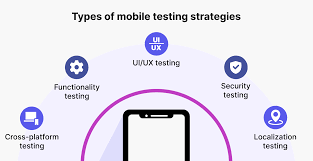These days, a well-designed and user-friendly mobile app UI is a need rather than a luxury in the world of mobile first. Still, it takes careful testing to guarantee a faultless user experience across a variety of gadgets and screen sizes. Boost your mobile UI testing game and ensure a seamless user experience on your app with these five recommended practices:
Accept Real Devices’ Power:
Real-device testing is critical even if emulators and simulators provide a practical testing environment. Little differences in touch responsiveness, screen resolution, and performance across devices may highlight user interface problems that would be missed in virtualized settings. Make the investment in a device lab or Cloud-based device testing tool to make sure your app runs perfectly on a range of actual devices that your target market uses.
The Art of User Flows: Mastery
Test every UI element without becoming mired in detail. Rather, give user flows—the whole path a user follows to achieve certain activities within your app—priority testing. Draw up important user processes like account management, checkout, product search, and login. Test every flow thoroughly to find any friction spots, unclear layouts, or navigational problems that impede a smooth user experience.
Give Usability First Priority and Think Beyond Functionality
Mobile UI testing goes beyond functionality even if it’s important that features perform as intended. Usability testing looks at how easy to use and intuitive the UI of your app is. Take actual consumers through usability studies to see how they interact with the software. Easily found buttons? Exists an easy-to-use navigation? Exists a logical information architecture? Iteratively improving the design and getting user input can help you produce a mobile user interface that is not only useful but also enjoyable to use.
Usability Counts: Universal Design
It is not just great practice in today’s inclusive environment to make sure your mobile app is accessible to people with disabilities; it is a must. Include accessibility testing into your approach to mobile user interface testing. Verify that your software follows accessibility standards such as WCAG (Web Content Accessibility Guidelines) using tools and guidelines. This guarantees efficient navigation and interaction with your software for people with cognitive, motor, or visual impairments.
Automate the Routine, Concentrate on the Strategic
Testing mobile user interfaces might take a while. Use automation’s potential to simplify monotonous chores. Regression testing is handled well by automated testing techniques, guaranteeing that essential features stay the same even after code modifications. Your staff may then concentrate on more strategic testing, investigating edge situations, and doing user testing sessions, which will eventually result in a more reliable and user-friendly mobile app.
Conclusion
Finally,mobile UI testing is a constant process that calls for a combination of technical know-how, empathy for users, and a dedication to continued development. Through the use of actual devices, user flows as top priorities, accessibility and usability as top priorities, and the smart use of automation, you can guarantee that your mobile app provides an excellent user experience across a variety of platforms and screen sizes. Recall that a fully tested mobile user interface is an investment in user happiness, brand reputation, and, in the end, the long-term performance of your mobile app, not simply a technical checkbox. With a user-centric and well tested mobile user interface that keeps your users interested and coming back for more, go out and conquer the mobile environment.
